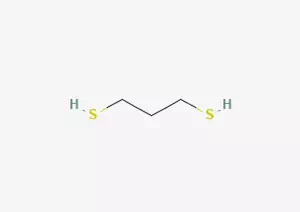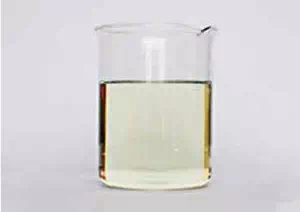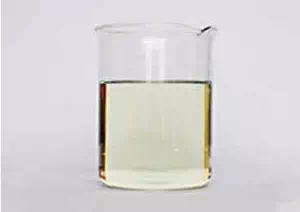1,3-Dimercaptopropane CAS 109-80-8 Information
Chemical Name | 1,3-Dimercaptopropane |
Other Name | Propane-1,3-dithiol; 1,3-Propanedithiol |
CAS | 109-80-8 |
EINECS | 203-706-9 |
Type | Flavors & Fragrances; Pharmaceutical raw materials; Organic raw materials |
Molecular Formula | C3H8S2 |
Molecular Weight | 108.23 |

1,3-Dimercaptopropane CAS 109-80-8 Properties
Melting point | -79 °C (lit.) |
Boiling point | 169 °C (lit.) |
density | 1.078 g/mL at 25 °C (lit.) |
vapor density | >1 (vs air) |
vapor pressure | 5 mm Hg ( 37.7 °C) |
refractive index | n20/D 1.539(lit.) |
Fp | 138 °F |
storage temp. | Store below +30°C. |
pka | 9.86±0.10(Predicted) |
form | Liquid |
color | Clear light yellow |
Specific Gravity | 1.078 |
Odor | at 0.10 % in propylene glycol. meaty sulfurous |
Odor Type | meaty |
biological source | synthetic |
Water Solubility | <0.1 g/100 mL at 21 ºC |
What is 1,3-Dimercaptopropane?
1, 3-propanedimercaptan (1, 3-dimercaptopropane), as an organic compound with a specific chemical composition, has its molecular formula precisely defined as C3H8S2, and the corresponding molecular weight is determined through calculation to be 108.22. Under normal temperature and pressure conditions, this chemical substance exhibits its unique physical form - it appears as a transparent liquid ranging from colorless to light yellow, accompanied by a rather distinct odor. It is worth noting that when this substance comes into contact with an oxidant, there is a possibility of decomposition, and the decomposition process may release a variety of gaseous products including carbon monoxide, carbon dioxide, sulfur oxides and hydrogen sulfide. In view of the above characteristics, during the storage and management of 1, 3-propanedimercaptan, extra caution must be exercised to effectively avoid its direct contact with various oxides to ensure the safety and stability of storage.

1,3-Dimercaptopropane Uses
In the field of organic chemistry synthesis, 1, 3-propanedimercaptan, as an important reagent, is widely used in the preparation of thioketone and thioacetal. This characteristic enables it to play a key role in numerous chemical synthesis reactions, providing a rich variety of approaches for the construction of organic compounds.
It is worth noting that 1, 3-propanedimercaptan also has unique flavor characteristics and can be used as a flavoring agent. In the food industry and related fields, its unique smell and taste can add distinctive flavors to products, meeting consumers' diverse demands for texture and flavor.
In the specific applications of organic synthesis, 1, 3-dimercaptopropane plays an important role. It is used as a precursor for the synthesis of cyclic disulfide (1, 3-disulfide) derivatives of carbonyl compounds. Through a series of elaborately designed chemical reactions, 1, 3-dimercaptopropane can undergo specific interactions with carbonyl compounds, thereby forming cyclic disulfide acetal derivatives with specific structures and properties, providing a foundation for further organic synthesis and drug development, etc.
Not only that, 1, 3-dimercaptopropane can also react with ferric dodecarbonyl. During this process, it actively participates in the chemical reaction and ultimately contributes to the preparation of hexadecarbonyl diiron propanethiol. This reaction is of great significance in the field of organometallic chemistry and provides the possibility for the synthesis of new organometallic compounds.
In addition, 1, 3-propanedimercaptan also plays a unique role in protecting aldehydes and ketones. It can effectively protect aldehydes and ketones by reversibly forming disulfide. This protective mechanism can prevent unnecessary side reactions between aldehydes and ketones during complex chemical synthesis processes, ensuring the purity and yield of the target product.
In addition, 1, 3-propanedimercaptan also has the ability to react with metal ions to form chelating rings. When it meets metal ions, it can form a stable chelating ring structure through specific chemical bonding methods. This characteristic makes it have potential application value in the detection and separation of metal ions and the preparation of related materials.
Service
* Prompt reply and 24 hours online, professional team to provide best price and high quality product.
* Sample testing support.
* Every batch of products will be tested to ensureits quality.
*The packing also can be according the customers` requirment.
*Any inquiries will be replied within 24 hours.
*we provide Commerical Invoice, Packing List, Bill of loading, COA , Health certificate and Origin certificate. If your markets have any special requirements, let us know.








